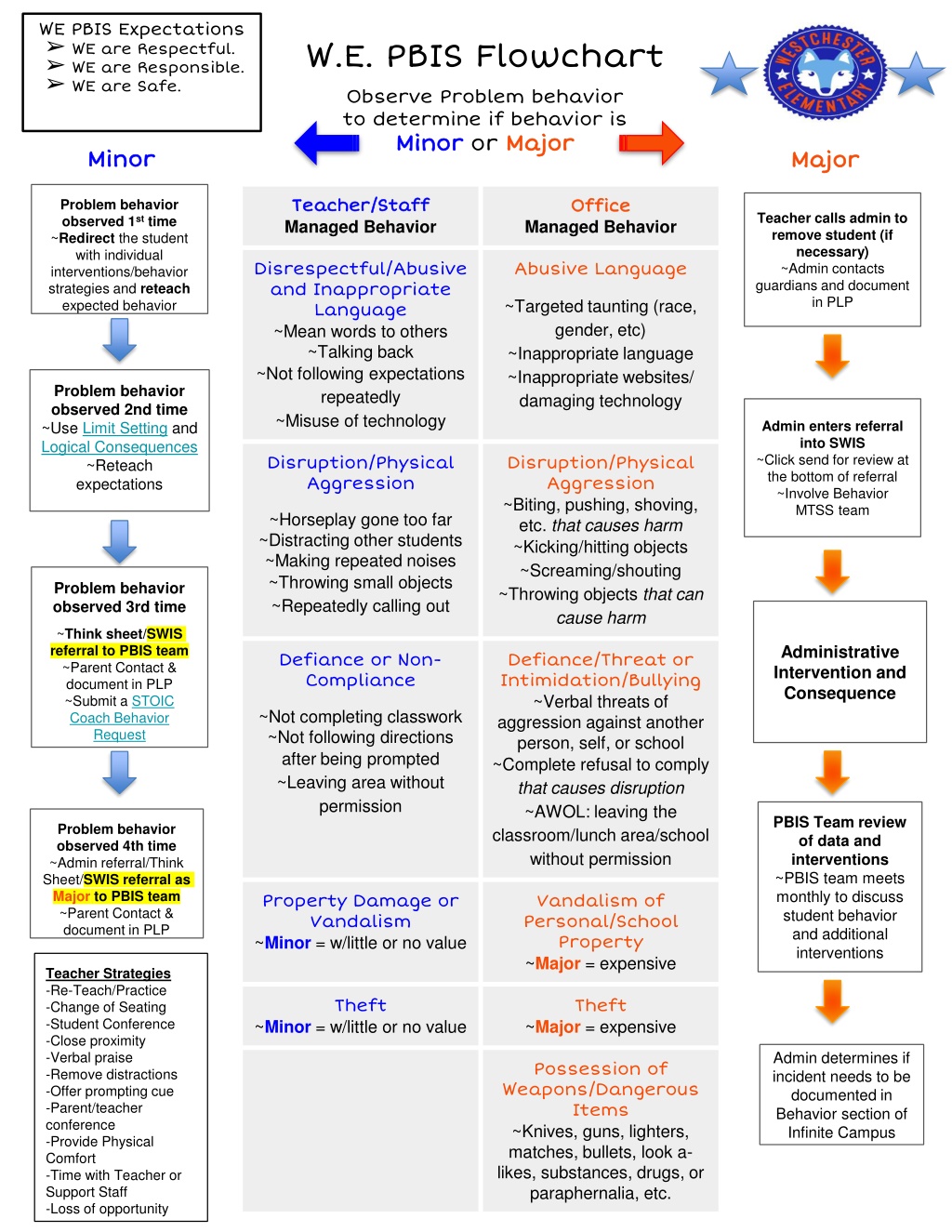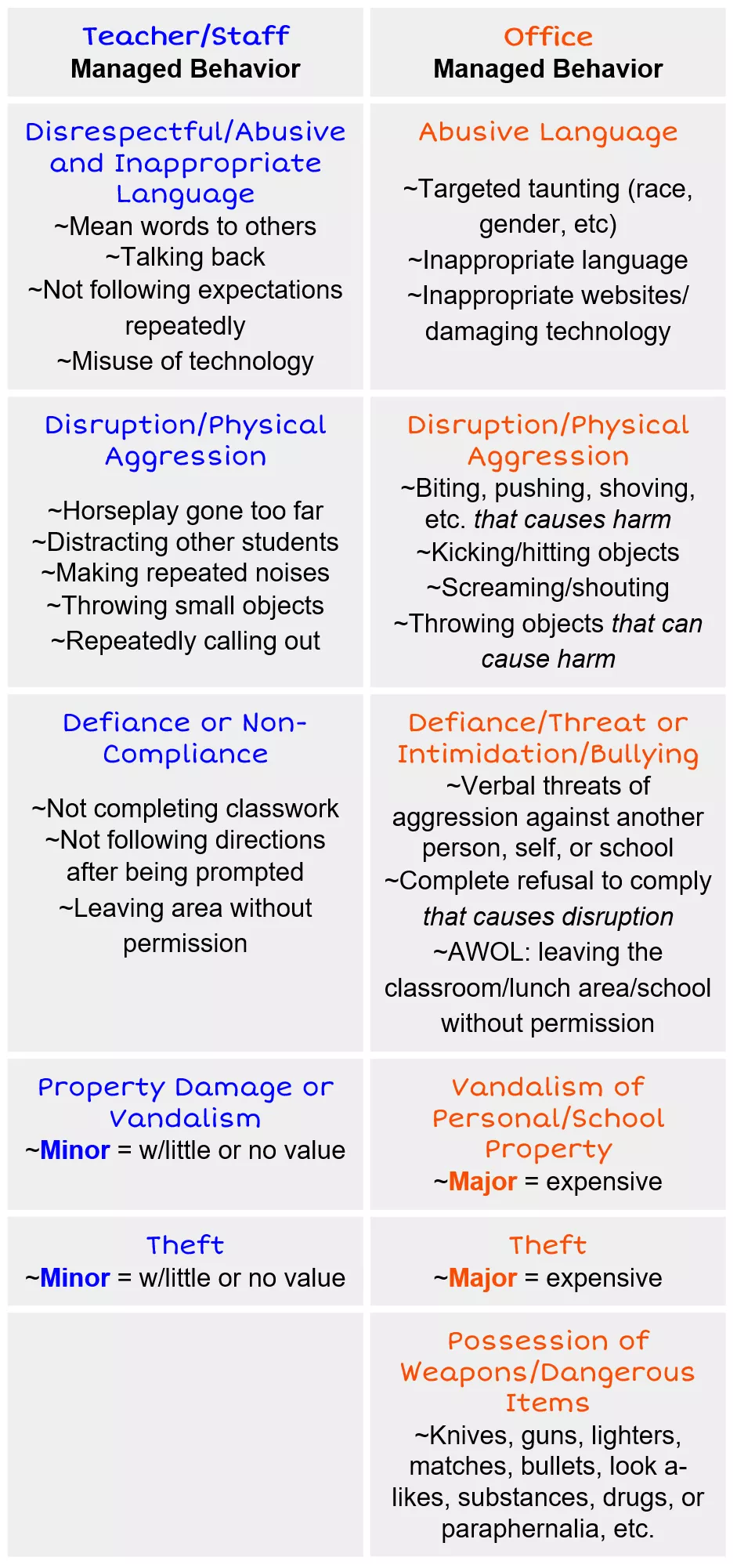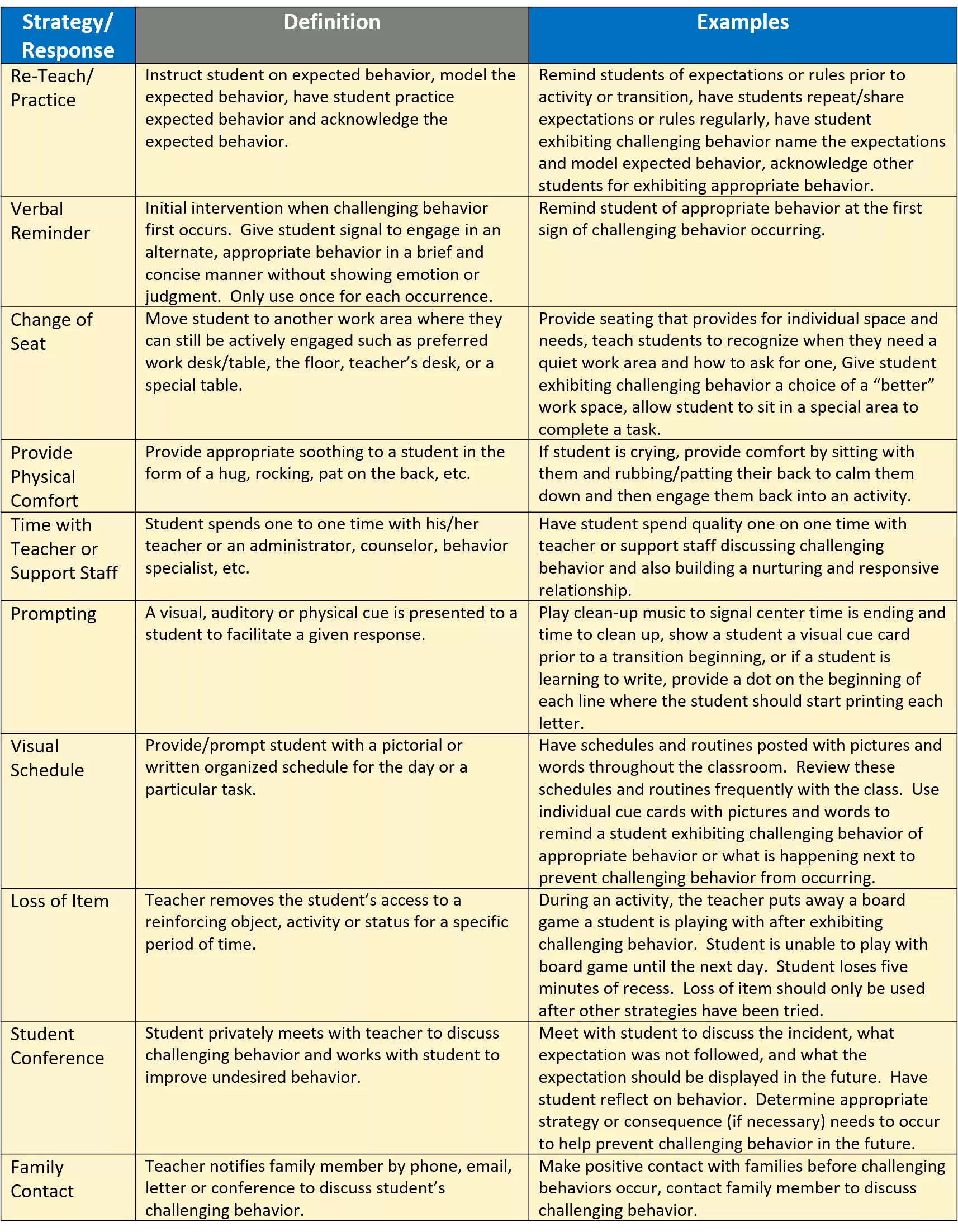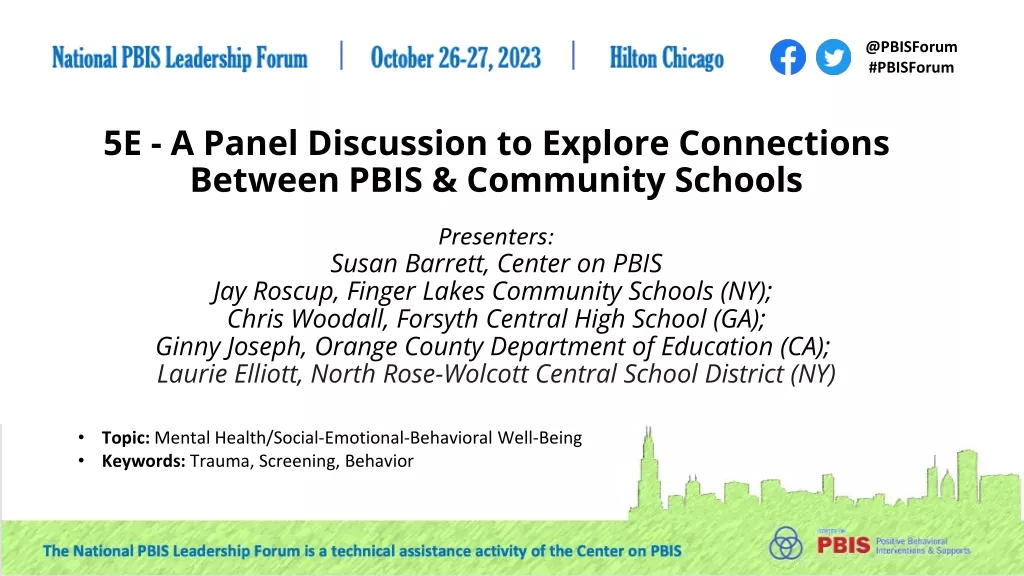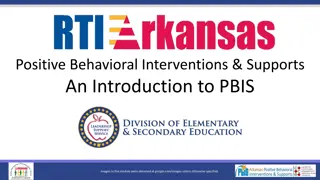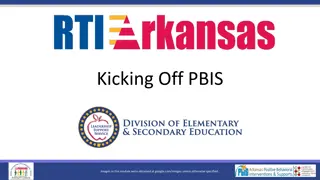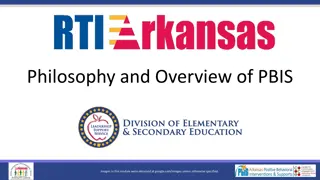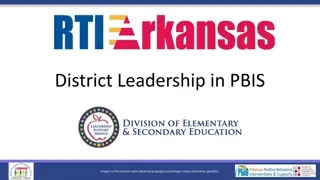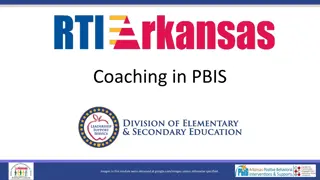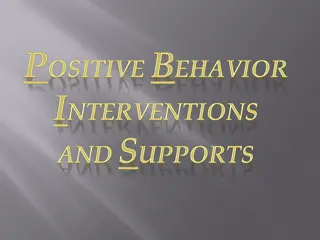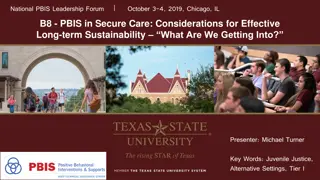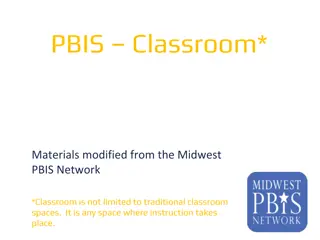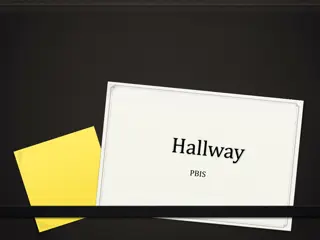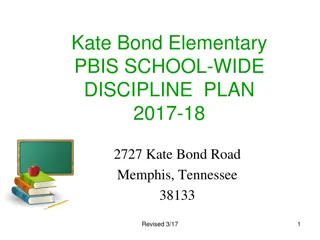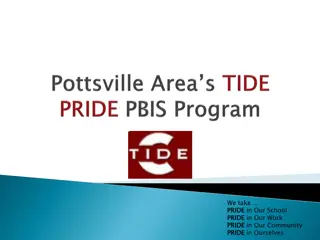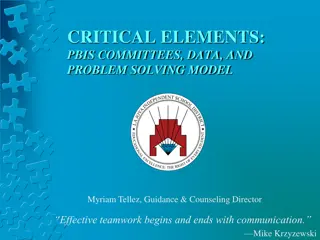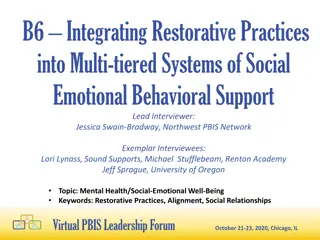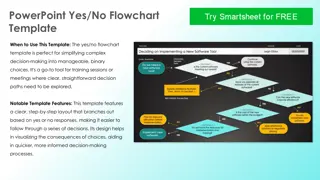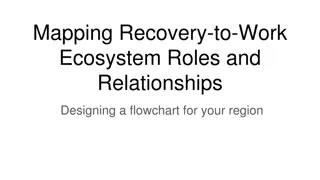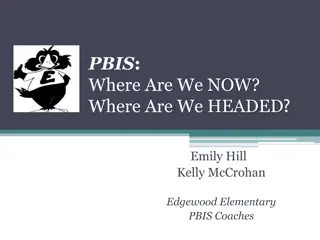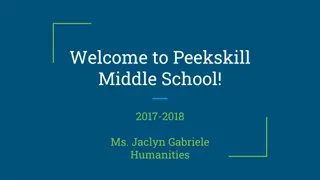PBIS Expectations and Behavior Flowchart
The PBIS flowchart outlines behavior expectations and interventions for minor and major incidents in a school setting. It covers disrespectful behavior, disruption, defiance, property damage, theft, possession of weapons, and more. The flowchart guides teachers and staff on managing and addressing student behavior through various strategies and consequences, including re-teaching, logical consequences, parent contact, administrative intervention, and involvement of the Behavior MTSS team. It emphasizes creating a safe, respectful, and responsible school environment through proactive behavior management.
Download Presentation

Please find below an Image/Link to download the presentation.
The content on the website is provided AS IS for your information and personal use only. It may not be sold, licensed, or shared on other websites without obtaining consent from the author.If you encounter any issues during the download, it is possible that the publisher has removed the file from their server.
You are allowed to download the files provided on this website for personal or commercial use, subject to the condition that they are used lawfully. All files are the property of their respective owners.
The content on the website is provided AS IS for your information and personal use only. It may not be sold, licensed, or shared on other websites without obtaining consent from the author.
E N D
Presentation Transcript
WE PBIS Expectations WE are Respectful. WE are Responsible. WE are Safe. W.E. PBIS Flowchart Observe Problem behavior to determine if behavior is Minor Minor or Major Major Minor Minor Major Major Teacher/Staff Teacher/Staff Managed Behavior Office Office Problem behavior observed 1sttime ~Redirect the student with individual interventions/behavior strategies and reteach expected behavior Teacher calls admin to remove student (if necessary) ~Admin contacts guardians and document in PLP Managed Behavior Disrespectful/Abusive and Inappropriate Language ~Mean words to others ~Talking back ~Not following expectations repeatedly ~Misuse of technology Abusive Language ~Targeted taunting (race, gender, etc) ~Inappropriate language ~Inappropriate websites/ damaging technology Problem behavior observed 2nd time ~Use Limit Setting and Logical Consequences ~Reteach expectations Admin enters referral into SWIS ~Click send for review at the bottom of referral ~Involve Behavior MTSS team Disruption/Physical Aggression Disruption/Physical Aggression ~Biting, pushing, shoving, etc. that causes harm ~Kicking/hitting objects ~Screaming/shouting ~Throwing objects that can cause harm ~Horseplay gone too far ~Distracting other students ~Making repeated noises ~Throwing small objects ~Repeatedly calling out Problem behavior observed 3rd time ~Think sheet/SWIS referral to PBIS team ~Parent Contact & document in PLP ~Submit a STOIC Coach Behavior Request Administrative Intervention and Consequence Defiance or Non- Compliance Defiance/Threat or Intimidation/Bullying ~Verbal threats of aggression against another person, self, or school ~Complete refusal to comply that causes disruption ~AWOL: leaving the classroom/lunch area/school without permission ~Not completing classwork ~Not following directions after being prompted ~Leaving area without permission PBIS Team review of data and interventions ~PBIS team meets monthly to discuss student behavior and additional interventions Problem behavior observed 4th time ~Admin referral/Think Sheet/SWIS referral as Major to PBIS team ~Parent Contact & document in PLP Property Damage or Vandalism ~Minor = w/little or no value Vandalism of Personal/School Property ~Major = expensive Teacher Strategies -Re-Teach/Practice -Change of Seating -Student Conference -Close proximity -Verbal praise -Remove distractions -Offer prompting cue -Parent/teacher conference -Provide Physical Comfort -Time with Teacher or Support Staff -Loss of opportunity Theft Theft ~Minor = w/little or no value ~Major = expensive Admin determines if incident needs to be documented in Behavior section of Infinite Campus Possession of Weapons/Dangerous Items ~Knives, guns, lighters, matches, bullets, look a- likes, substances, drugs, or paraphernalia, etc.
Strategy/ Response Re-Teach/ Practice Definition Examples Instruct student on expected behavior, model the expected behavior, have student practice expected behavior and acknowledge the expected behavior. Remind students of expectations or rules prior to activity or transition, have students repeat/share expectations or rules regularly, have student exhibiting challenging behavior name the expectations and model expected behavior, acknowledge other students for exhibiting appropriate behavior. Remind student of appropriate behavior at the first sign of challenging behavior occurring. Initial intervention when challenging behavior first occurs. Give student signal to engage in an alternate, appropriate behavior in a brief and concise manner without showing emotion or judgment. Only use once for each occurrence. Move student to another work area where they can still be actively engaged such as preferred work desk/table, the floor, teacher s desk, or a special table. Verbal Reminder Provide seating that provides for individual space and needs, teach students to recognize when they need a quiet work area and how to ask for one, Give student exhibiting challenging behavior a choice of a better work space, allow student to sit in a special area to complete a task. If student is crying, provide comfort by sitting with them and rubbing/patting their back to calm them down and then engage them back into an activity. Change of Seat Provide appropriate soothing to a student in the form of a hug, rocking, pat on the back, etc. Provide Physical Comfort Time with Teacher or Support Staff Student spends one to one time with his/her teacher or an administrator, counselor, behavior specialist, etc. Have student spend quality one on one time with teacher or support staff discussing challenging behavior and also building a nurturing and responsive relationship. Play clean-up music to signal center time is ending and time to clean up, show a student a visual cue card prior to a transition beginning, or if a student is learning to write, provide a dot on the beginning of each line where the student should start printing each letter. Have schedules and routines posted with pictures and words throughout the classroom. Review these schedules and routines frequently with the class. Use individual cue cards with pictures and words to remind a student exhibiting challenging behavior of appropriate behavior or what is happening next to prevent challenging behavior from occurring. During an activity, the teacher puts away a board game a student is playing with after exhibiting challenging behavior. Student is unable to play with board game until the next day. Student loses five minutes of recess. Loss of item should only be used after other strategies have been tried. Meet with student to discuss the incident, what expectation was not followed, and what the expectation should be displayed in the future. Have student reflect on behavior. Determine appropriate strategy or consequence (if necessary) needs to occur to help prevent challenging behavior in the future. Make positive contact with families before challenging behaviors occur, contact family member to discuss challenging behavior. A visual, auditory or physical cue is presented to a student to facilitate a given response. Prompting Provide/prompt student with a pictorial or written organized schedule for the day or a particular task. Visual Schedule Teacher removes the student s access to a reinforcing object, activity or status for a specific period of time. Loss of Item Student privately meets with teacher to discuss challenging behavior and works with student to improve undesired behavior. Student Conference Teacher notifies family member by phone, email, letter or conference to discuss student s challenging behavior. Family Contact
Accountability Hierarchy for students
2nd Warning: Logical Consequences 2nd Warning: Logical Consequences - - Allows teachers to set specific limits for behavior so students can learn the expectations Logical Consequence Examples: If you choose to Expectation Reminders have rude behavior when peers ask to sit with you, then you re choosing to sit alone use outside voice when lights are on or talk when the lights are off, then you re choosing to have silent lunch leave your area messy, then you choose to stay and help the custodians clean up sit in an unsafe way, then you re choosing to sit picnic style or in a regular chair Cafeteria Allow others to sit with you Voice level 1 or 2 when lights are on, and voice level 0 if lights are off Clean up your area Sit on your bottom touch or push/kick others, then you are choosing to walk with the teacher use level 2 voice, then you re choosing to practice level 0 voice during free time slam lockers, then you re choosing to go back and help clean the lockers run or go somewhere without permission, then you re choosing to wait until a teacher can walk with you Hallway Keep hands/feet to yourself Voice level 0 or 1 Close lockers quietly Walk and go directly to your destination look over/crawl under the stalls, then you re choosing to use another bathroom alone use a level 2 voice, then you re choosing practice level 0 during free time leave a mess, then you re choosing to help the custodians clean up go somewhere else without permission, then you re choosing to always go with a partner Restroom Allow privacy Voice level 0 or 1 Leave no trace Return to class quickly
WE PBIS Think Sheet Referral Form Student completes top section Think Sheet and takes home for parents to sign. Teacher completes bottom section Referral Form and gives to PBIS Team to add to SWIS (PBIS behavior referrals are not documented in IC) ------------------------------------------------------------------------------------------------------------------------
Goals of Misbehavior Chart Use this chart to help you determine students motivation for misbehavior. A child s lack of one or more of The Crucial C s The Crucial C s might explain unexpected behaviors. Crucial C (what a child might need) What child might believe and feel How adult might feel and respond Child's response to adult's action Suggested Strategies/Responses Child s Goal Temporarily stops the behavior when given attention, but soon continues May begin a new behavior to gain attention. CONNECT ~Ignore when possible ~Give attention in unexpected ways and for positive behavior ~Plan activities together ~Ignore the behavior, NOT the child ~Teach cooperation I only count when I am being noticed or served. I feel irritated and annoyed. Child needs to believe they belong and feel secure Attention Look at me I feel insecure or alienated Remind: scold, nag, and coax. I have power only when I show you that you can t make me/I can do whatever I want, or when you do what I want you to do. ~Allow voice and choice so student feels heard and can display power constructively ~Grant legitimate power ~Delegate responsibility so student feels sense of responsible power ~Avoid and defuse confrontations/Do not try to win ~Teach Self-Reliance I feel provoked, angry, and challenged. CAPABLE Behavior intensifies when reprimanded. Child needs believe they are in control of themself and to feel competent Power I m the boss Fight: "i'll make him/her do it" or "You can't get away with it." Defiant child wants to win/be boss. I feel inadequate, dependent, others are in control COUNT ~Maintain caring/trusting relationship with child ~Avoid retaliation ~Take time to help child ~Teach child how to express hurt and anger appropriately ~Teach child how to contribute/that their contributions matter I feel hurt, disappointed and angry I don't have power but l'll count if I can hurt others as I feel hurt. I ll show you , I knew you were against me Child needs to believe they matter and can make a difference, and feel valuable COURAGE Wants to get even, makes self-disliked, or seeks further revenge. Revenge I ll get even Punish: "How can he/she do this to me?" I will teach you a lesson . I feel insignificant ~Encourage efforts/notice strengths/ignore the negative ~Maintain faith in a child's ability ~Don't give up, pity or criticize ~Foster friendships to end social isolation, if present. ~Focus on past successes ~Provide opportunities for guarantee successes. ~Teach resilience I can't do anything right so I won't try to do anything at all. I am no good No reprimand therefore no reaction. Feels more hopeless/passive. no improvement Child needs to believe they can handle what comes, and feel hopeful Display of inadequacy (Avoidance of Failure) I give up I feel hopeless and discouraged Give Up: "it s not use. I feel inferior, useless or hopeless. *Remember, behaviors are attempts to get a need met. *Remember, behaviors are attempts to get a need met. Misbehavior can be thought of as a response to not having The Crucial C s. Use encouragement, limit setting and logical consequences to help children learn they can get their needs met in respectful, responsible and safe ways. Created from The Crucial C s and Rudolf Dreikurs Goals of Misbehavior. Amy Lew and Betty Lou Bettner, 1995
